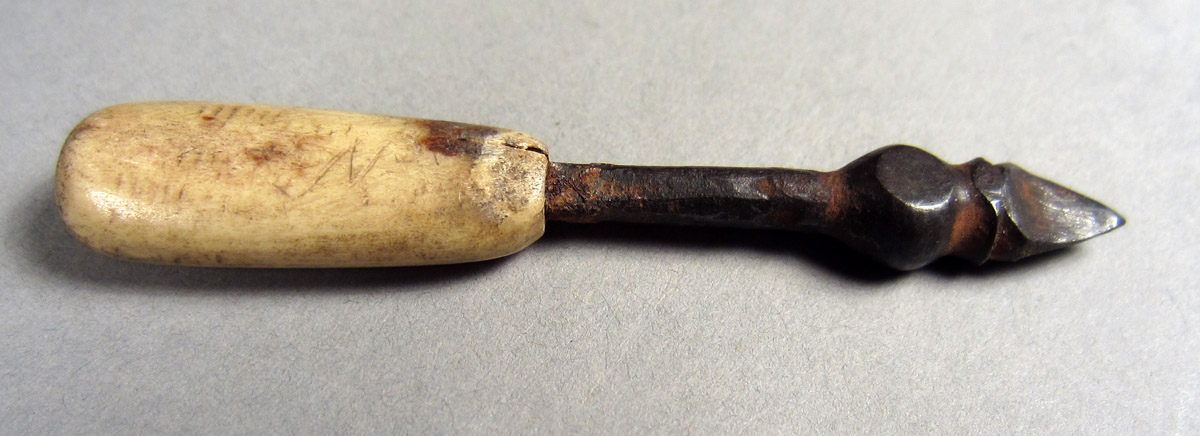Soldering Irons
Soldering irons melted solder and heated metal joints in order to distribute solder along their edges. Spelter was a hard solder made of two parts of zinc and one part of brass; it performed when work to be joined was brought to a red heat. Soldering irons were used with soft solders which fused at a low temperature, and it was the tool that was heated instead of the object. Common soft solders in use during the Dominys' working period were composed of three parts of zinc and one of lead or two parts of tin and one of lead.139
Soldering iron, Nathaniel Dominy IV (purchaser or maker), East Hampton, New York, 1800-1812. Copper; Hard Pine. 16.3" (L). Museum purchase with funds provided by Henry Belin du Pont, 1957.0026.057.
Before being soldered, the edges to be joined were covered with resin or borax to act as a flux and prevent oxidation. The Dominys kept a supply of both in their shops, and Nathaniel IV paid as little as 6 pence for a pound of resin as early as 1766.140 The process of soldering was relatively simple. The hot iron was rubbed against a cake of solder causing drops of it to fall on the joint. Next the tool was applied to the joint—to heat it and distribute the solder. Generally, two soldering irons were employed —one kept hot in a fire and the other in use. Although the steps of the process were simple, performance was not. Great skill was required in using the tools; they had to be hot enough to bring the edges of the joint to the fusing temperature of the solder, but not hot enough to make the solder fluid or to burn off their own tin coating.141
(Top) Soldering iron, Nathaniel Dominy IV (maker or purchaser), 1800-1812. Iron; Copper. 15.3" (L). Museum purchase with funds provided by Henry Belin du Pont, 1957.0026.058.
(Bottom) Soldering iron, Nathaniel Dominy IV (stocker), 1770-1812. Bone; Steel. 2.3" (L). Museum purchase, 1963.0156.303



